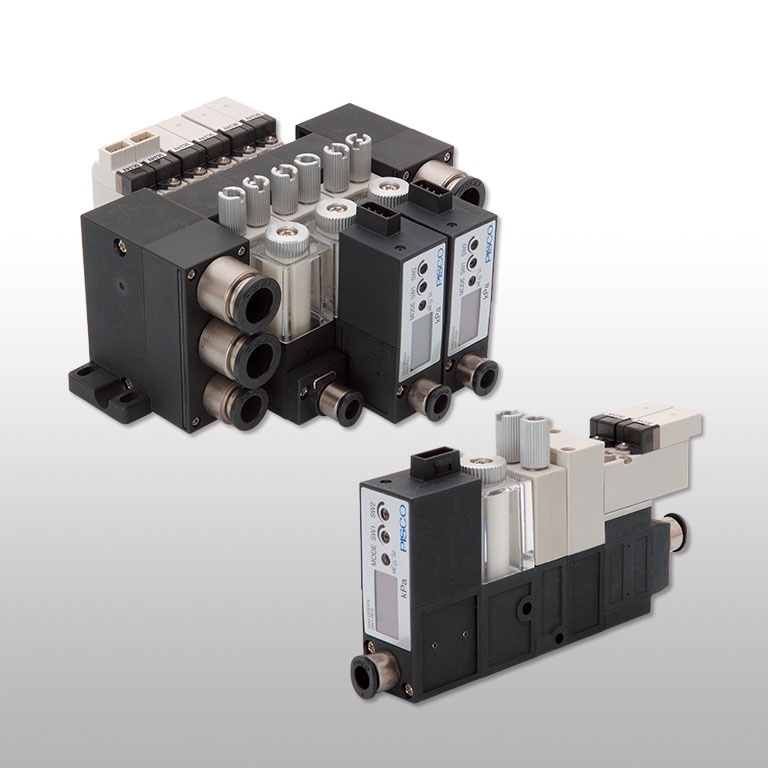Introduction Vacuum gripper systems are an essential part of modern automation and robotic handling solutions. They serve as the link between the machine and the workpiece, enabling precise, efficient, and gentle lifting or placement of objects using suction. In Indian industries—especially packaging, automotive, electronics, and food processing—vacuum grippers are replacing manual handling to improve productivity, consistency, and worker safety. This guide explains how vacuum grippers work, how to choose the right type for your application, and which global brands dominate the Indian market. What Is a Vacuum Gripper System? A vacuum gripper system uses negative pressure (vacuum) to create a suction force strong enough to hold and move objects. It generally consists of: Vacuum suction cups or pads that contact the surface Vacuum generators or ejectors that create negative pressure Control valves, filters, and sensors for operation safety and monitoring When activated, the vacuum reduces pressure beneath the suction cup, allowing atmospheric pressure to push the object against the gripper — providing a secure hold until release. Working Principle of Vacuum Grippers The working principle is simple yet powerful: The vacuum generator removes air between the suction cup and workpiece. Atmospheric pressure outside the cup presses the workpiece against the gripper. When the vacuum is released, the object is dropped or transferred. This technology allows handling of flat, curved, porous, or uneven surfaces, making it a universal gripping method across industries. Types of Vacuum Grippers Different designs serve different material handling needs: 1. Single-Cup Grippers Used for small, lightweight components in pick-and-place or assembly systems. 2. Multi-Cup Grippers Feature multiple suction cups mounted on a frame — ideal for large panels, glass, or packaging sheets. 3. Foam or Area Grippers Use a perforated foam pad that grips multiple or irregular-shaped products simultaneously, common in palletizing and logistics. 4. Hybrid Grippers (Mechanical + Vacuum) Combine vacuum suction with mechanical fingers for secure handling of heavy or porous items. 5. Soft Robotic Grippers Made of flexible silicone materials, these are designed for food, medical, and delicate product handling where gentle contact is essential. Selection Guide – How to Choose the Right Vacuum Gripper Choosing the correct vacuum gripper system depends on several key factors: Workpiece Material & Surface Type Smooth or rough, porous or sealed surface. Example: Use foam grippers for uneven or mixed surfaces. Weight & Size of the Workpiece Determines suction capacity and cup size. Operating Environment Consider temperature, dust, and cleanliness (e.g., cleanroom vs. factory). Cycle Time & Speed Fast cycles require high vacuum flow and responsive valves. Vacuum Generation Method Pneumatic ejector (compressed air) or electric pump (energy efficient). Compliance Standards Food-grade (FDA compliant) or ESD-safe versions for electronics. A proper selection ensures high efficiency, lower energy costs, and long product life. Top Vacuum Gripper Brands in India India’s automation sector is supported by several trusted global brands offering high-performance vacuum components: PISCO (Japan) – Precision-engineered vacuum pads, ejectors, and fittings with cleanroom-ready options. Schmalz (Germany) – Industry leader in vacuum technology with advanced area grippers and smart vacuum systems. Piab (Sweden) – Innovative COAX® vacuum technology and lightweight robot-compatible grippers. Festo (Germany) – Offers modular vacuum automation solutions for industrial robots. SMC (Japan) – Compact and reliable vacuum generators and suction cups for high-speed automation. Coval (France) – Energy-efficient vacuum pumps and grippers ideal for packaging and palletizing. Each brand offers specialized models for diverse needs — from mini vacuum pads to complex robotic end-of-arm systems. Advantages of Using Vacuum Gripper Systems Versatile & Gentle Handling: Ideal for fragile, smooth, or flexible items. High-Speed Operation: Supports rapid automation cycles. Energy Efficient: Modern ejectors reduce compressed air usage. Compact & Lightweight: Easier integration with robotic arms. Low Maintenance: Fewer moving parts reduce wear and downtime. Conclusion Vacuum gripper systems are the backbone of efficient robotic and automated material handling in India. Whether in packaging, automotive, or electronics production, these systems provide the precision, reliability, and flexibility needed for today’s high-performance industries. By selecting the right vacuum gripper type and partnering with trusted brands like PISCO, Schmalz, Piab, Festo, SMC, or Coval, Indian manufacturers can achieve smoother automation, reduced costs, and improved productivity.
Chat with us on WhatsApp
×
This is your website preview.
Currently it only shows your basic business info. Start adding relevant business details such as description, images and products or services to gain your customers attention by using Boost 360 android app / iOS App / web portal.
https://www.ibizkart.in/dhaka/latest-update/vacuum-gripper-systems-working-principle-selection-guide-top-brands-in-india/998
Vacuum Gripper Systems: Working Principle, Selection Guide & Top Brands in India

2025-10-11T16:31:55
Introduction Vacuum gripper systems are an essential part of modern automation and robotic handling solutions. They serve as the link between the machine and the workpiece, enabling precise, efficient, and gentle lifting or placement of objects using suction. In Indian industries—especially packaging, automotive, electronics, and food processing—vacuum grippers are replacing manual handling to improve productivity, consistency, and worker safety. This guide explains how vacuum grippers work, how to choose the right type for your application, and which global brands dominate the Indian market. What Is a Vacuum Gripper System? A vacuum gripper system uses negative pressure (vacuum) to create a suction force strong enough to hold and move objects. It generally consists of: Vacuum suction cups or pads that contact the surface Vacuum generators or ejectors that create negative pressure Control valves, filters, and sensors for operation safety and monitoring When activated, the vacuum reduces pressure beneath the suction cup, allowing atmospheric pressure to push the object against the gripper — providing a secure hold until release. Working Principle of Vacuum Grippers The working principle is simple yet powerful: The vacuum generator removes air between the suction cup and workpiece. Atmospheric pressure outside the cup presses the workpiece against the gripper. When the vacuum is released, the object is dropped or transferred. This technology allows handling of flat, curved, porous, or uneven surfaces, making it a universal gripping method across industries. Types of Vacuum Grippers Different designs serve different material handling needs: 1. Single-Cup Grippers Used for small, lightweight components in pick-and-place or assembly systems. 2. Multi-Cup Grippers Feature multiple suction cups mounted on a frame — ideal for large panels, glass, or packaging sheets. 3. Foam or Area Grippers Use a perforated foam pad that grips multiple or irregular-shaped products simultaneously, common in palletizing and logistics. 4. Hybrid Grippers (Mechanical + Vacuum) Combine vacuum suction with mechanical fingers for secure handling of heavy or porous items. 5. Soft Robotic Grippers Made of flexible silicone materials, these are designed for food, medical, and delicate product handling where gentle contact is essential. Selection Guide – How to Choose the Right Vacuum Gripper Choosing the correct vacuum gripper system depends on several key factors: Workpiece Material & Surface Type Smooth or rough, porous or sealed surface. Example: Use foam grippers for uneven or mixed surfaces. Weight & Size of the Workpiece Determines suction capacity and cup size. Operating Environment Consider temperature, dust, and cleanliness (e.g., cleanroom vs. factory). Cycle Time & Speed Fast cycles require high vacuum flow and responsive valves. Vacuum Generation Method Pneumatic ejector (compressed air) or electric pump (energy efficient). Compliance Standards Food-grade (FDA compliant) or ESD-safe versions for electronics. A proper selection ensures high efficiency, lower energy costs, and long product life. Top Vacuum Gripper Brands in India India’s automation sector is supported by several trusted global brands offering high-performance vacuum components: PISCO (Japan) – Precision-engineered vacuum pads, ejectors, and fittings with cleanroom-ready options. Schmalz (Germany) – Industry leader in vacuum technology with advanced area grippers and smart vacuum systems. Piab (Sweden) – Innovative COAX® vacuum technology and lightweight robot-compatible grippers. Festo (Germany) – Offers modular vacuum automation solutions for industrial robots. SMC (Japan) – Compact and reliable vacuum generators and suction cups for high-speed automation. Coval (France) – Energy-efficient vacuum pumps and grippers ideal for packaging and palletizing. Each brand offers specialized models for diverse needs — from mini vacuum pads to complex robotic end-of-arm systems. Advantages of Using Vacuum Gripper Systems Versatile & Gentle Handling: Ideal for fragile, smooth, or flexible items. High-Speed Operation: Supports rapid automation cycles. Energy Efficient: Modern ejectors reduce compressed air usage. Compact & Lightweight: Easier integration with robotic arms. Low Maintenance: Fewer moving parts reduce wear and downtime. Conclusion Vacuum gripper systems are the backbone of efficient robotic and automated material handling in India. Whether in packaging, automotive, or electronics production, these systems provide the precision, reliability, and flexibility needed for today’s high-performance industries. By selecting the right vacuum gripper type and partnering with trusted brands like PISCO, Schmalz, Piab, Festo, SMC, or Coval, Indian manufacturers can achieve smoother automation, reduced costs, and improved productivity.
2025-10-11T16:31:55
Keywords
- Customizable vacuum gripper systems India
- High-speed robotic material handling
- Vacuum grippers for fragile objects
- Energy-efficient vacuum handling solutions
- Industry-leading vacuum gripper brands India
- Selection guide for vacuum grippers
- Vacuum generator and ejector technology
- Vacuum suction cups and pads
- Types of vacuum grippers for handling
- Vacuum gripper systems for industrial automation

Submit Your Enquiry